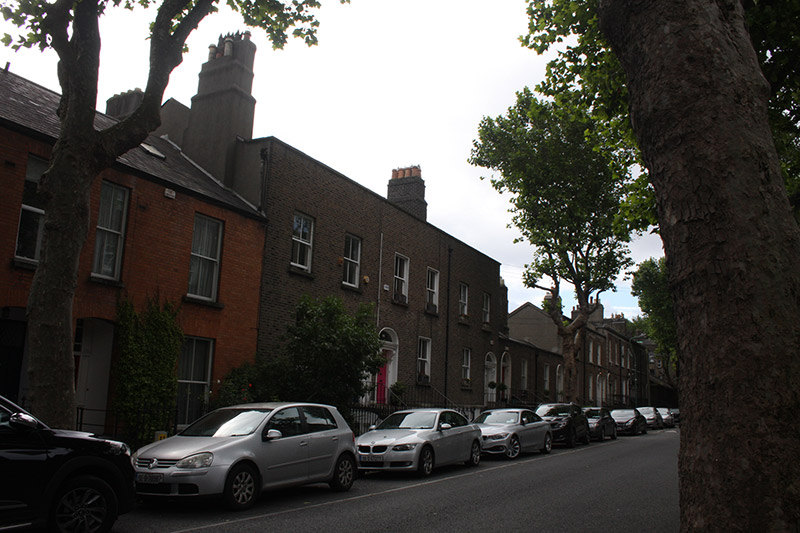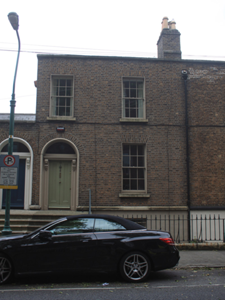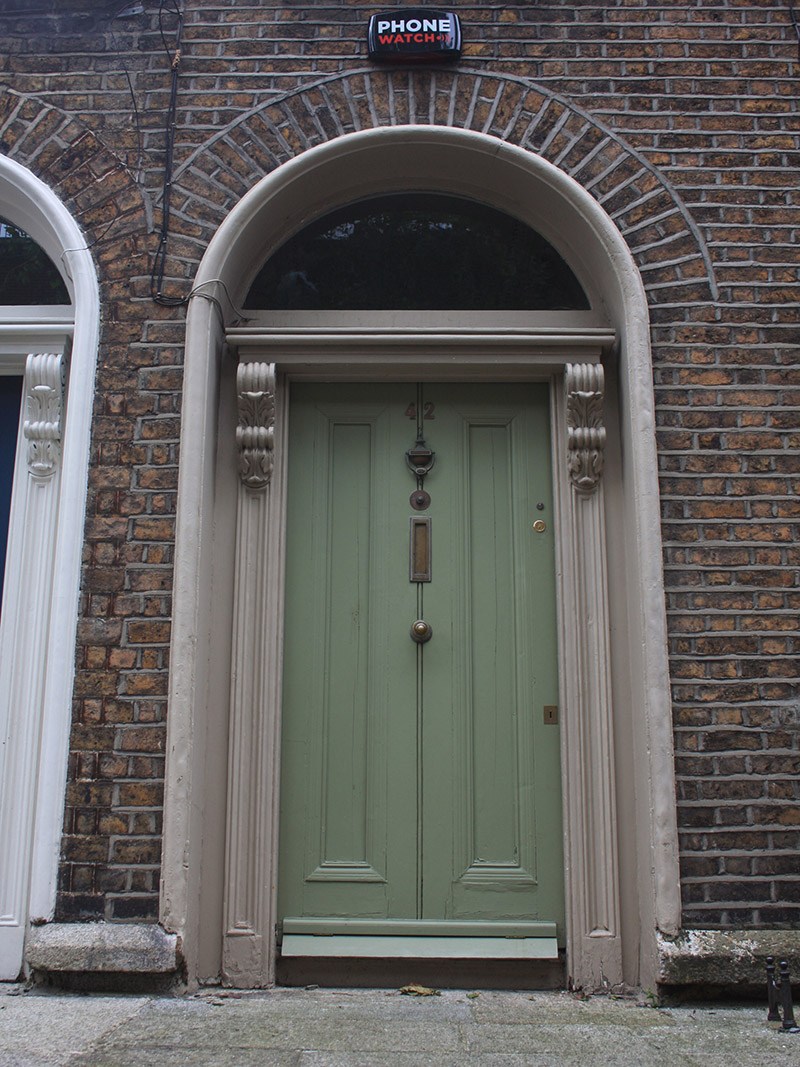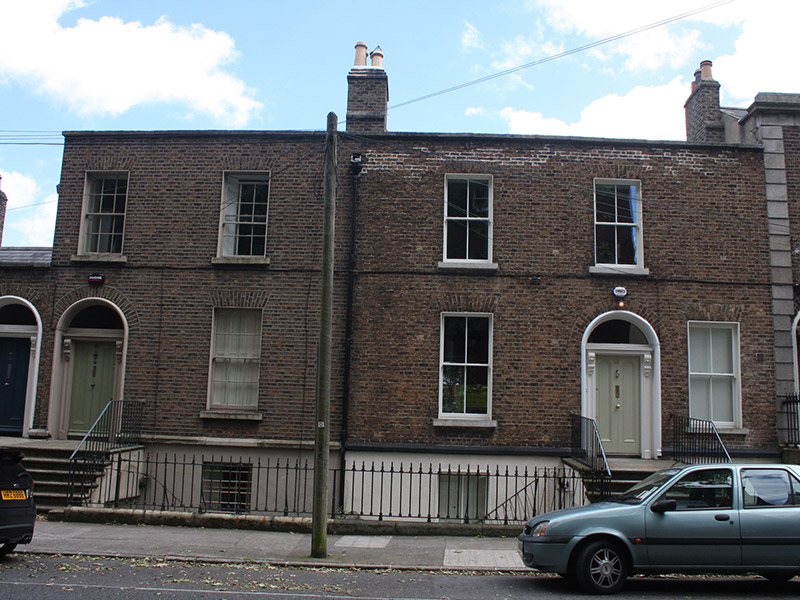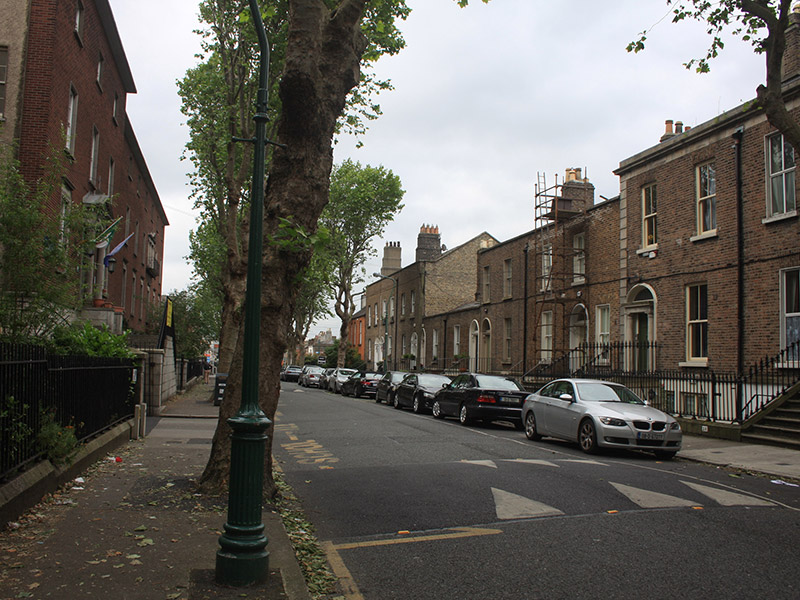Survey Data
Reg No
50110389
Rating
Regional
Categories of Special Interest
Architectural, Artistic
Original Use
House
In Use As
House
Date
1850 - 1870
Coordinates
315518, 232840
Date Recorded
16/06/2017
Date Updated
--/--/--
Description
Attached two-bay two-storey over raised basement house, built c. 1860, in terrace of mixed houses. M-profile pitched slate roof, shared brick chimneystacks having clay and terracotta pots, partially hidden behind parapet with cut granite coping to front (west) and north elevations. Shared cast-iron rainwater goods. Brown brick, laid in Flemish bond, to wall to front, cut granite plinth course over lined-and-ruled rendered basement wall. Rendered wall to side (north) elevation. Square-headed window openings having granite sills, six-over-six pane timber sliding sash windows. Round-headed door opening to front with moulded render surround. Doorcase comprising panelled pilasters, scrolled consoles having acanthus leaf decoration supporting carved cornice. Plain fanlight. Timber panelled door. Nosed granite steps with cast-iron boot-scrape to shared platform. Cast-iron railings. Square-headed door opening to basement having recent door. Cast-iron gate and matching railings on cut granite plinth wall enclosing basement.
Appraisal
The historic form and character of this house has been maintained through the retention of salient features, such as sash windows and classically-influenced doorcase. Cut granite detailing articulates the composition and lends textural variation to the facade. Synge Street was reputedly named for the Church of Ireland Bishop Edward Synge, who held land there in the eighteenth century. The street was developed from the mid-nineteenth century, as demand for suburban housing grew with the expansion of the city and rise of the middle class.
